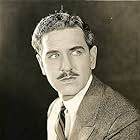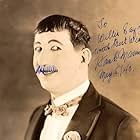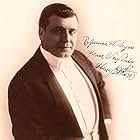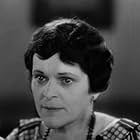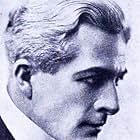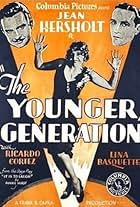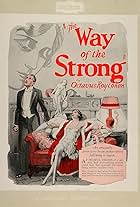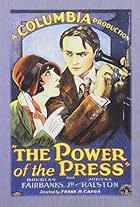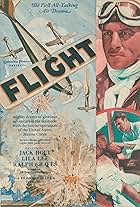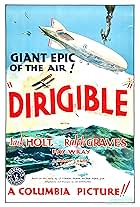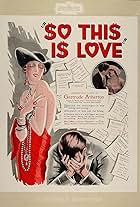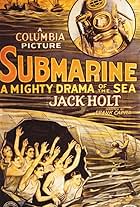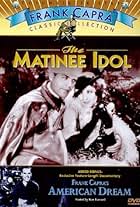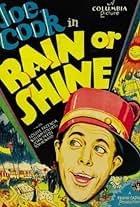I cannot review this film. It is a sound film where the sound has been lost. Perhaps there had been a silent version made contemporaneously, but it seems a miracle that this copy survived at all.
I remember a class with Stephen Prince at Virginia Tech where we were discussing the advent of sound, and the obvious answer to the problem of combining image and sound seemed to be a phonograph. He nodded and then just started listing the seemingly minor but increasingly problematic issues with synching up the picture to sound. Aside from the idea that it would be difficult, at best, to get the phonograph and the film to start at the right time, what happens when a frame on the film gets dropped for any variety of reasons? Just asking the questions makes it obvious why optical soundtracks won out pretty quickly.
That doesn't mean that there weren't attempts at using sound discs work, and Frank Capra's The Donovan Affair was one of those. The film survived, but the separate audio discs were lost. That leaves a film that should have a mountain of dialogue and primitive one-track sound design with nothing but its visuals. That could end up working. Heck, it might have been able to work with some intertitles thrown in (there probably was a silent version that did this, but, alas, not anymore), but without anything along those lines? It's just people standing in medium shots, intercut with closeups, in desperate need of a lip reader.
I have literally no idea what is going on beyond the murder that happens in the pitch black at the big swanky dinner. I don't know who it is. I don't know any of the other guests at the dinner or the guy throwing it. When the police show up and start asking questions, I don't know what he's asking. When he pulls in the old guy who's been lurking around outside in the dark and stormy night the whole time and pulls out the big eye ring that the murdered guy had been wearing, I don't know what it means. When the screen goes fully black three times, I get the real sense that there's some soundscape and dialogue going on instead of just quiet blackness, but I don't hear any of it. I could probably get most of these questions by reading up on the source play by Owen Davis, or even referring to the movie's poster, but I'm not gonna do it.
So, I'm left with the visuals. The print itself was contrasty and ugly, and yet it's not that hard to see that Capra had a good, working eye, that he continued cutting conversations between close ups and medium shots, probably to keep his options open in terms of cutting things out and moving things around. There are some group shots that manage to keep everything in frame, and the extended shots of blackness imply to me that he was already trying to play with sound. It's just unfortunate that I don't hear anything.
I can also see evidence of his sense of humor with quick cuts to bits of dialogue that were obviously meant for comedic effect as well as the appearance and reappearance of a gun that shoots water. I suspect that there's a good bit of humor in between the travails of the young man trying to throw off suspicion of himself despite his innocence for whatever reason.
So, I get the sense that this was an entertaining little mystery whodunit at the time, but the lack of a soundtrack prevents any sort of real appreciation. I can imagine, much as I imagined the incomplete form of Mother Machree by John Ford into something complete, but it's only my imagination and not the film itself.
I'd be interested if the soundtracks were ever discovered, though.









